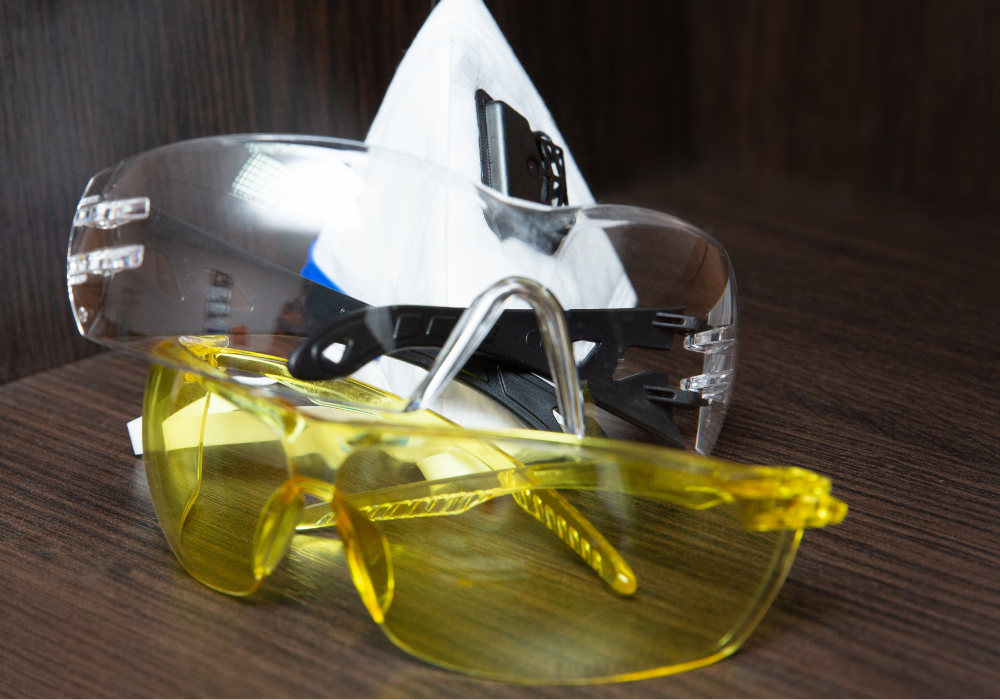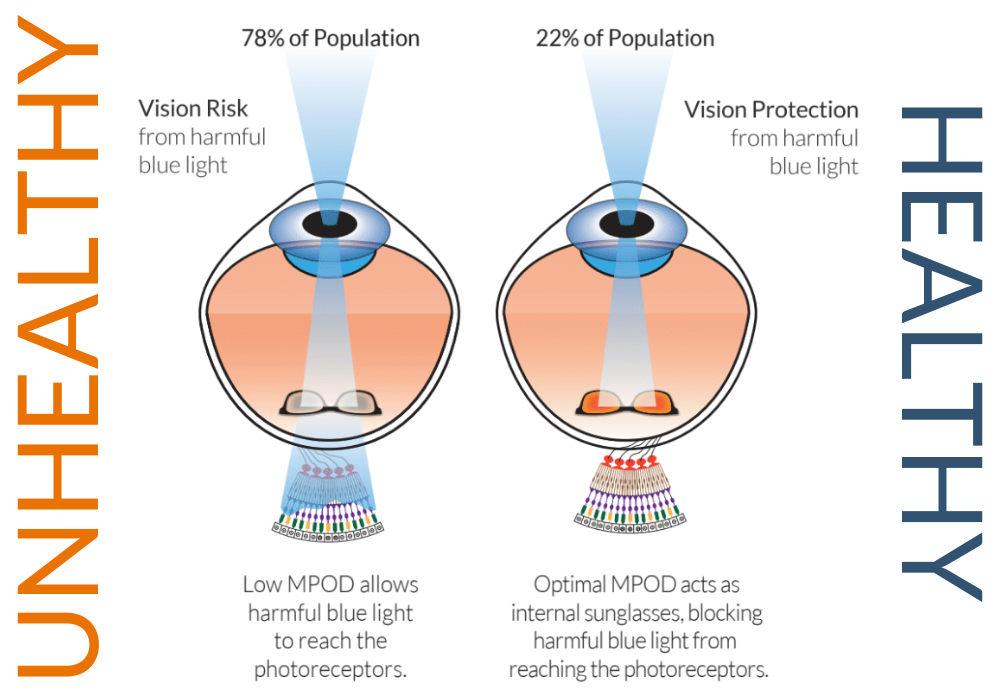Why Do Athletes Use Yellow-Tinted Lenses?
Posted by EyePromise on Apr 28th 2022
If you followed any of the Winter Olympics this year, you may have seen a few athletes wearing spectacles with a yellowish tint. Do you know why some athletes opt for this specific-colored lens? You may be surprised to learn that this kind of lens offers unique performance benefits that otherwise may escape athletes. Find out what they are and how everyone (yes, even you) is born with their own set of yellow-tinted glasses.
Benefits of the Yellow Tint

Visible light is a linear spectrum ranging from short (violet/blue light) to long (red/yellow) wavelengths. Longer wavelengths tend to be easier for our eyes to receive and interpret, while shorter wavelengths have a higher energy level and scatter more easily. This creates visual “noise” and makes it more difficult for our eyes to focus. Yellow-tinted lenses allow longer wavelengths of light to pass but filter out the shorter wavelengths, eliminating visual “noise” and increasing the eye’s ability to focus clearly. They’ve also been shown to have a brightening effect in low-light situations due to their ability to reduce light scatter.
Yellow tints can help improve contrast sensitivity by reducing what’s known as chromatic aberration. Chromatic aberration is the inability of the eyes to bring various wavelengths of light in focus at a single point. Because light differs in length across the spectrum, it reaches different depths within the eye. This creates some degree of blur, even for those with “good” vision. This blurring effect in turn reduces contrast, clarity, and, potentially, the visual system’s reaction speed.
What Are Yellow Glasses Modeled After?
The eyes are equipped with a natural, yellow-tinted filter that’s been honed by millions of years of evolution. This filter is called the macular pigment, and it’s located in the back of the eye where light is focused just in front of the photoreceptors, the sensitive visual cells responsible for our vision. Like artificial yellow tint, macular pigment helps filter certain lights to reduce noise in the eye and increase visibility and contrast. A healthy, or dense, macular pigment (MPOD) has also been shown to increase clarity, reduce glare and light sensitivity, and increase visual motor processing speeds.

What Is Macular Pigment Made Of?
Macular pigment is made up of 2 dietary antioxidants found in nature called zeaxanthin (zee-uh-zan-thin) and lutein (loo-teen). These antioxidants are part of a unique group of nutrients called carotenoids (kuh-rot-eh-noids). There are about 800 naturally occurring carotenoids. Fifty of those are found in the diet, 20 make it into the bloodstream, and only two make it to the eyes. Once in the eye, the macular pigment chooses to concentrate more zeaxanthin than lutein (2:1 ratio), whereas the rest of the retina typically has a 1:1 ratio.
Everyone is born with macular pigment, but it tends to weaken as we age. This is because our bodies don’t produce zeaxanthin and lutein on their own. These carotenoids can be found in brightly colored fruits and vegetables and leafy greens and must be eaten or ingested to sustain a healthy macular pigment.
Downfalls of Yellow Tints
External filters like yellow-tinted glasses are designed to reduce the amount of visible light being allowed into the eyes. We know what you’re thinking, “Isn’t that the good part? Why is this listed as a downfall?” Well, that’s because it can also be considered a downfall. Because these lenses filter out a portion of visible light, your eyes aren’t getting the full picture. This can lead to misconstrued visual information, which can potentially lead to impaired judgement.

Think of it like this: you’re wearing yellow-tinted or amber glasses. Everything’s looking clearer, but your eyes can’t pick up the subtle blue color of the ice patch in front of you. If your eyes don’t deliver that message to your brain, you don’t know to avoid that step in the road and SLIP!
Internal filtration through the macular pigment retains the amount of visible light received but is still able to filter out the noisy and potentially harmful short-wavelength light. Macular pigment health can be improved through diet and/or supplementation. To gain a true competitive edge, athletes would need to eat 20-50 ears of corn a day! That’s why many choose supplementation.
Building Your Natural Yellow Lenses
Studies show that you can improve your macular pigment by supplementing with dietary zeaxanthin and lutein consistently over time. EyePromise® is the only eye vitamin brand that offers the amount of dietary zeaxanthin necessary to meet the macular pigment’s natural ratio of zeaxanthin to lutein. This offers maximum protection and clarity. Additionally, EyePromise eye vitamins are NSF Contents Tested and Certified, with a line of performance products taking the extra step to be NSF Certified for Sport.
Learn more about what to expect from EyePromise performance products.


